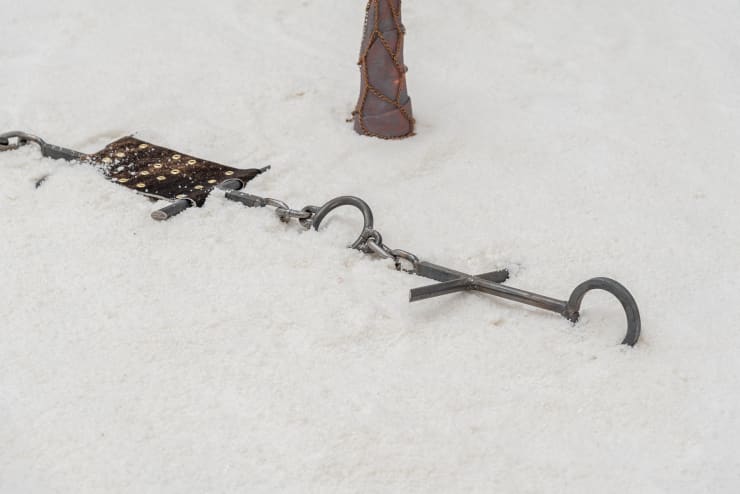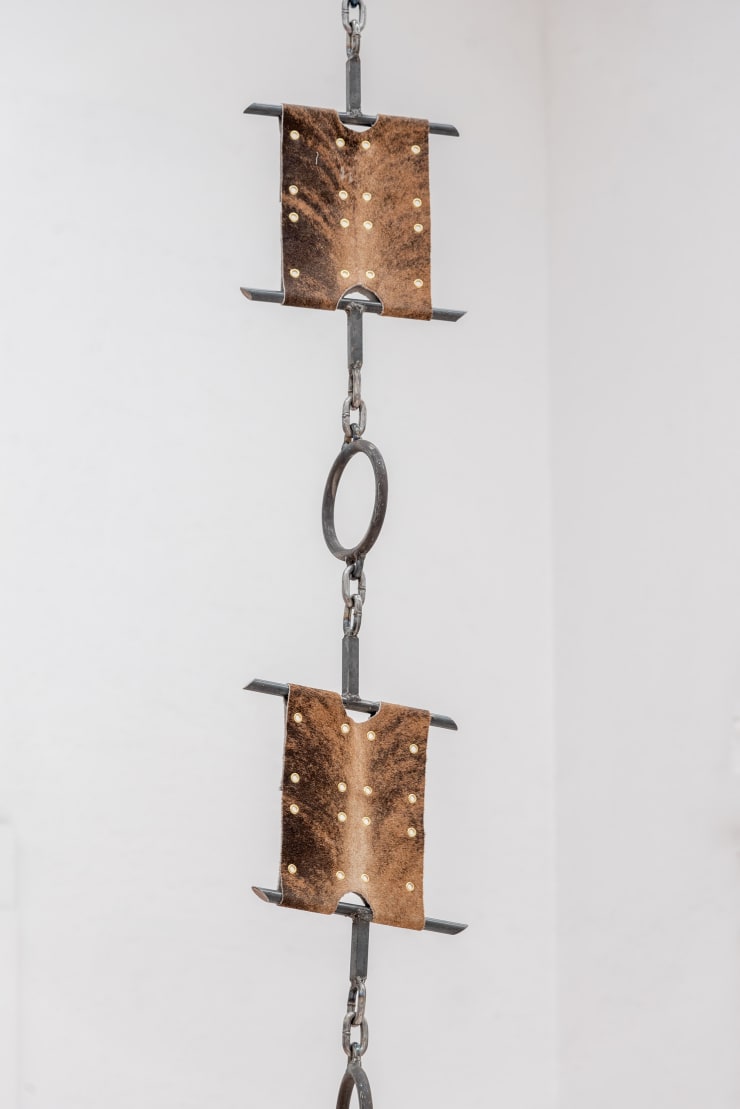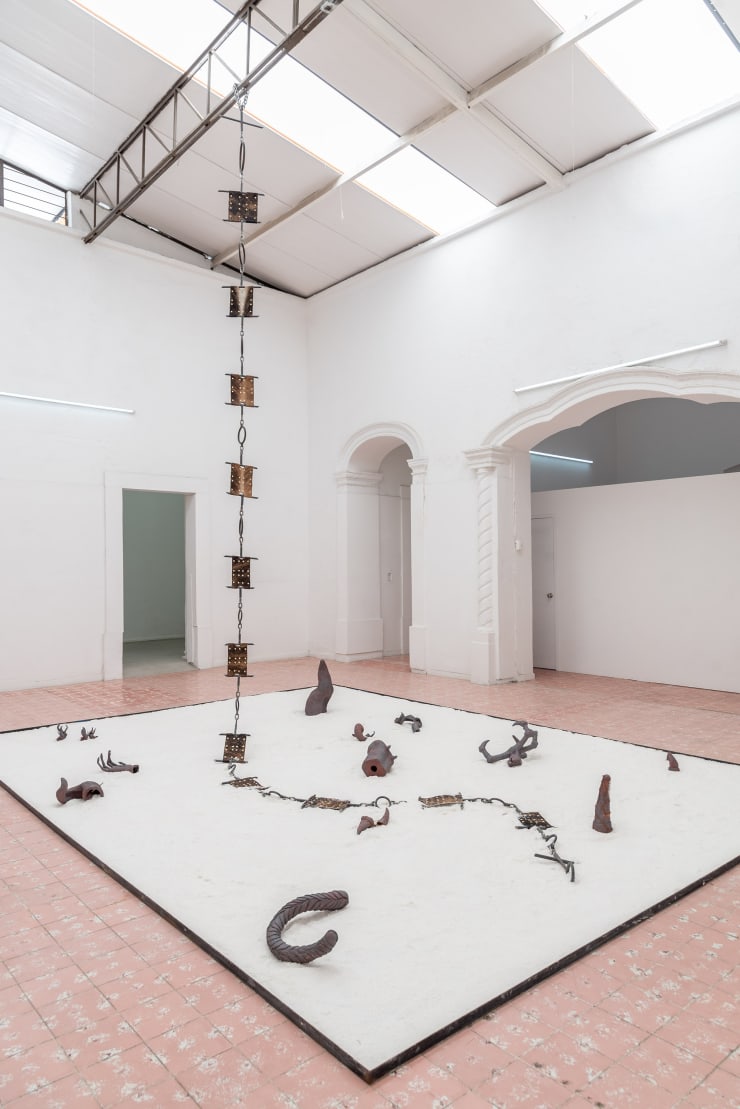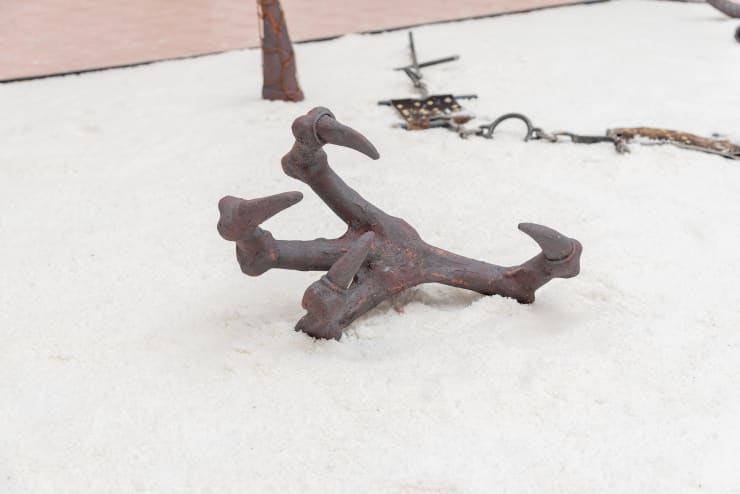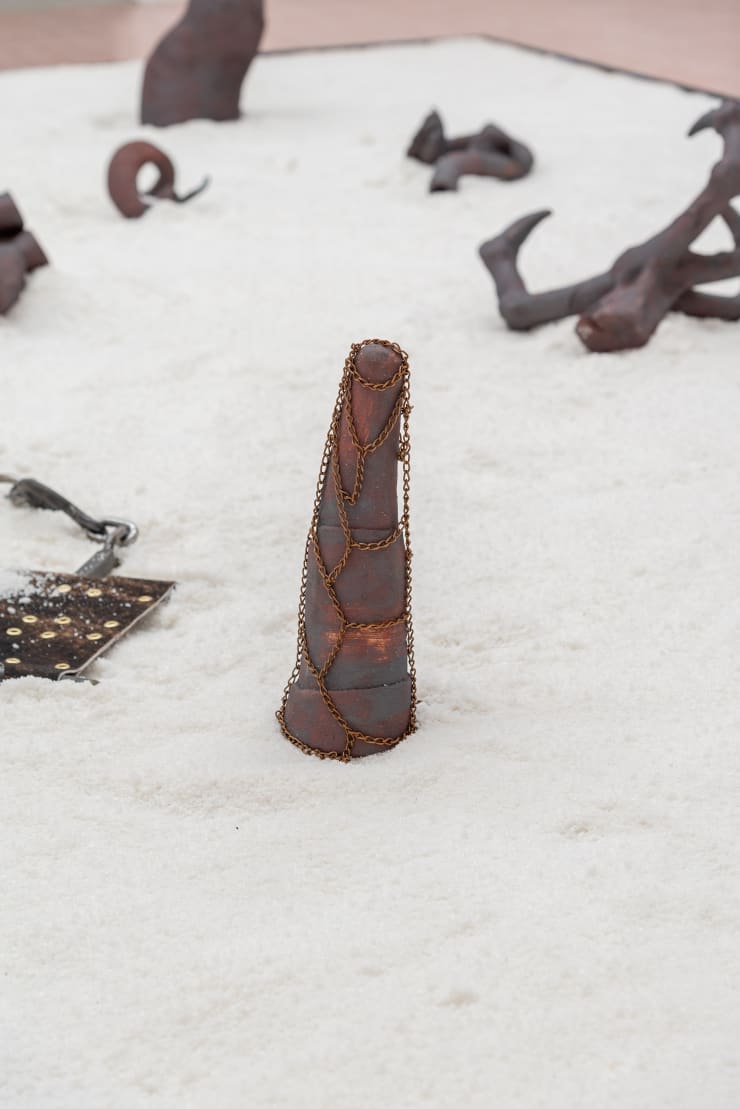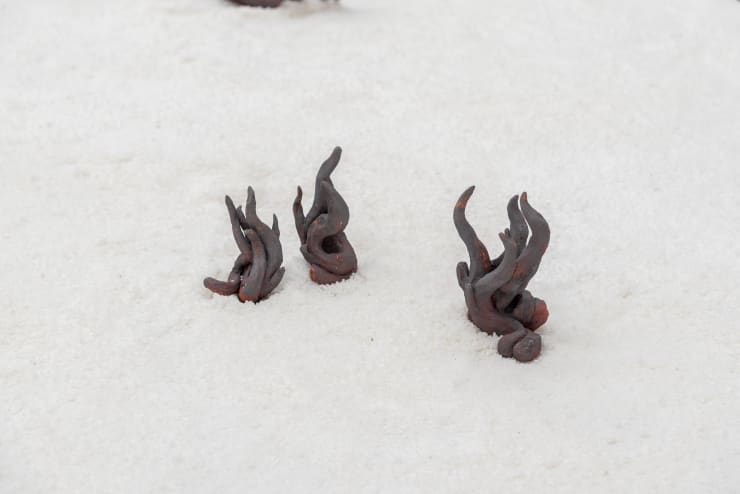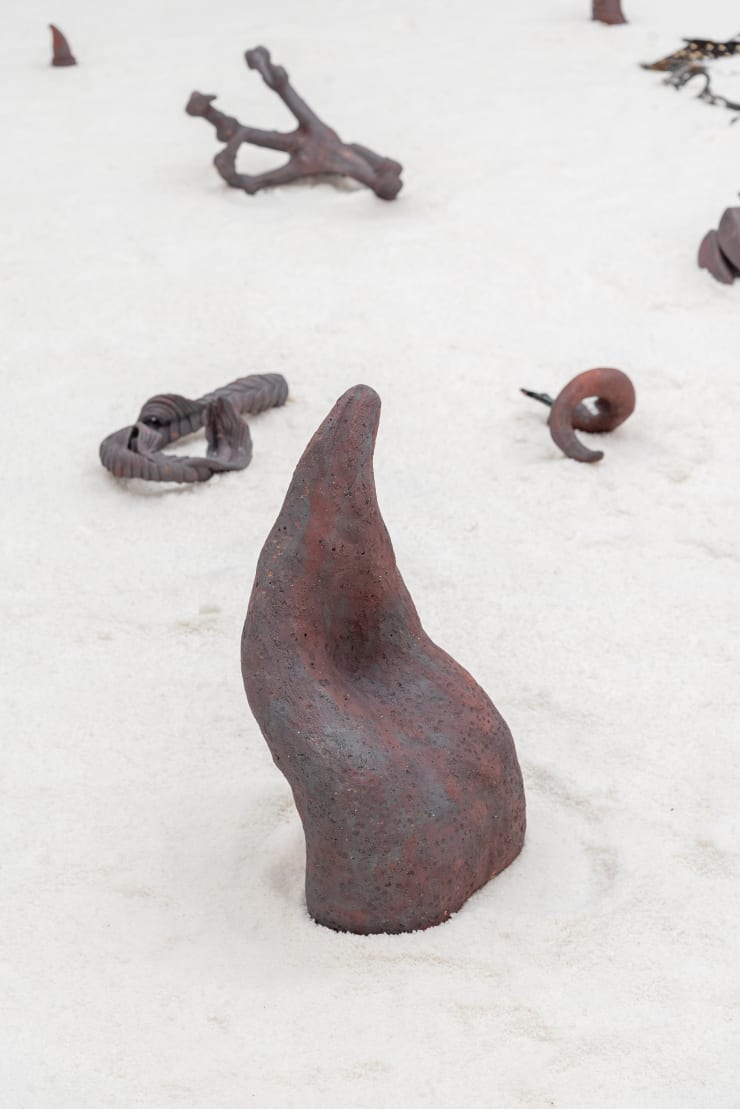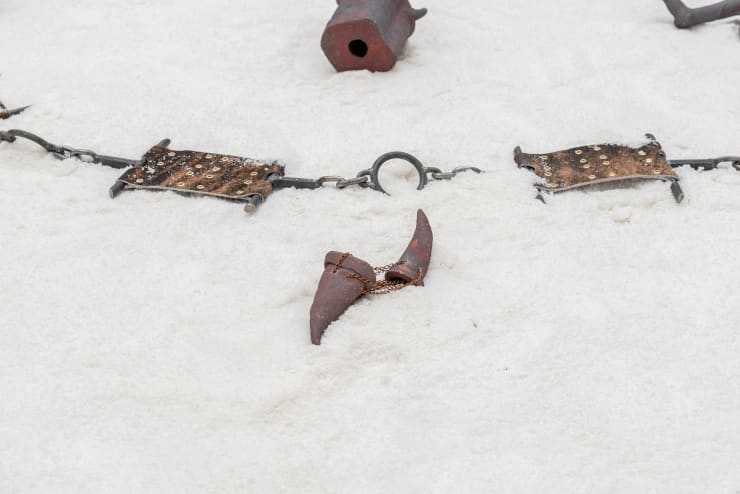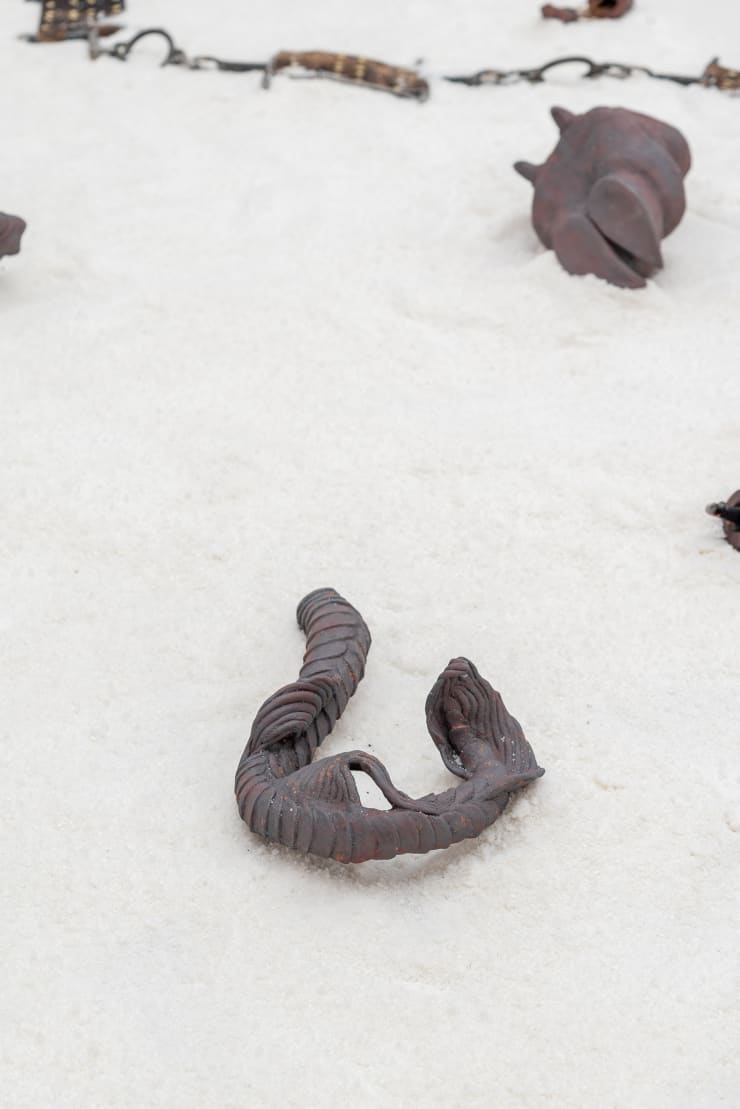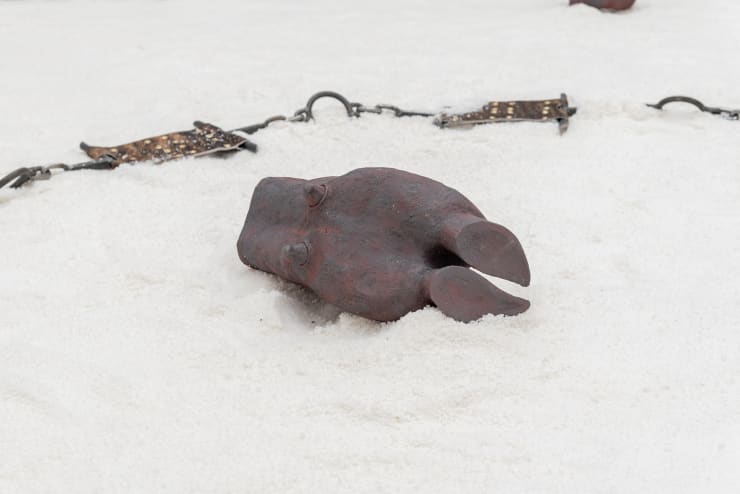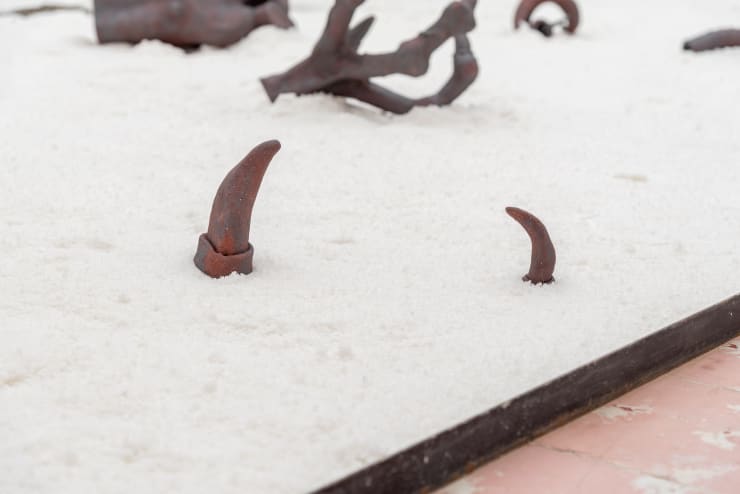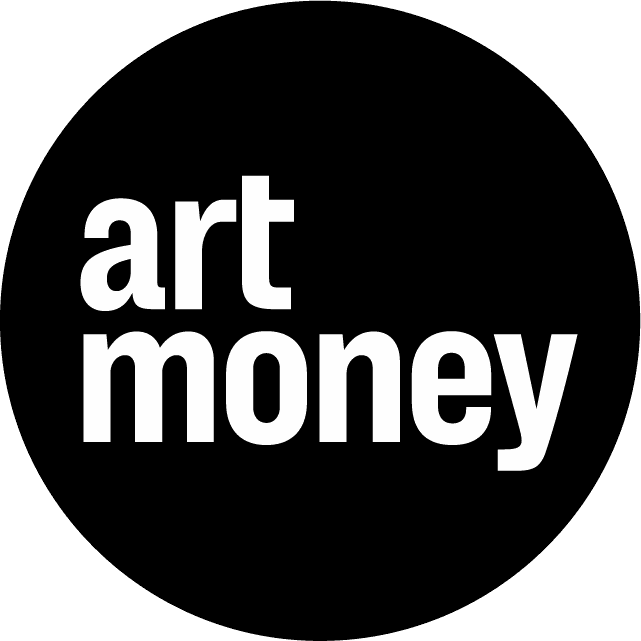Yeni Mao creates architectonic installations and sculpture, often using building vernacular combined with various components including leather and ceramic. Dealing in equations and discordances of the body and the built environment, Mao uses tactics of recognition and object subjectivity to tackle larger themes such as transnational states, spirituality, bondage, and high architectural modernism. As with all of his solo presentations, Vol. 3: chimera was created with site specificity. Mao blurs the lines between any conventional artifact exhibition and an incorporated installation that may exist outside of contemporary artistic expression.
Mao is interested in the transformation of essential materials into objects that exist in our realm, as to suggest a genesis of flesh. Here in Vol. 3: chimera, he elects a the limited palette of elemental materials of steel, cowhide, clay and salt. It is notable that the glaze on the stoneware works is pure ferric oxide, derived from rust and baked into the greenware. The slightly metallic, burnt-blood finish is a form of steel and iron, Maos’ base sculptural medium and the structure of the hanging work. These ceramic fragments suggest parts of a mythological beast, or portions cut from larger monuments.
The hanging work ties the fragments together, a spine to the narrative. A suspended chain with repeated, progressively smaller links of circular welded steel links and panels of riveted cowhide rests in a bed of salt. It is ambiguous in nature, perceptively shifting between utilitarian object and representation. Following the repeated motifs along the length of the work indicates a progression in time, the repetitions creating a space. Taking interest in building in of itself as an expression, it connects the installation to the architectural envelope.
The chimera originates in greek mythology as an imaginary monster, compounded of incongruous parts. Its meaning has since expanded in psychology to fabrications of the mind, and in science, to entities with diverse genetic material. Vol. 3: chimera takes those meanings as a point of departure for this exploded bestiary. Mao parallels material alchemy, a creation “myth” in of itself, with the creation and destruction of our own myths, and the fetishistic impulse to transcribe and identify ourselves with images and objects.
